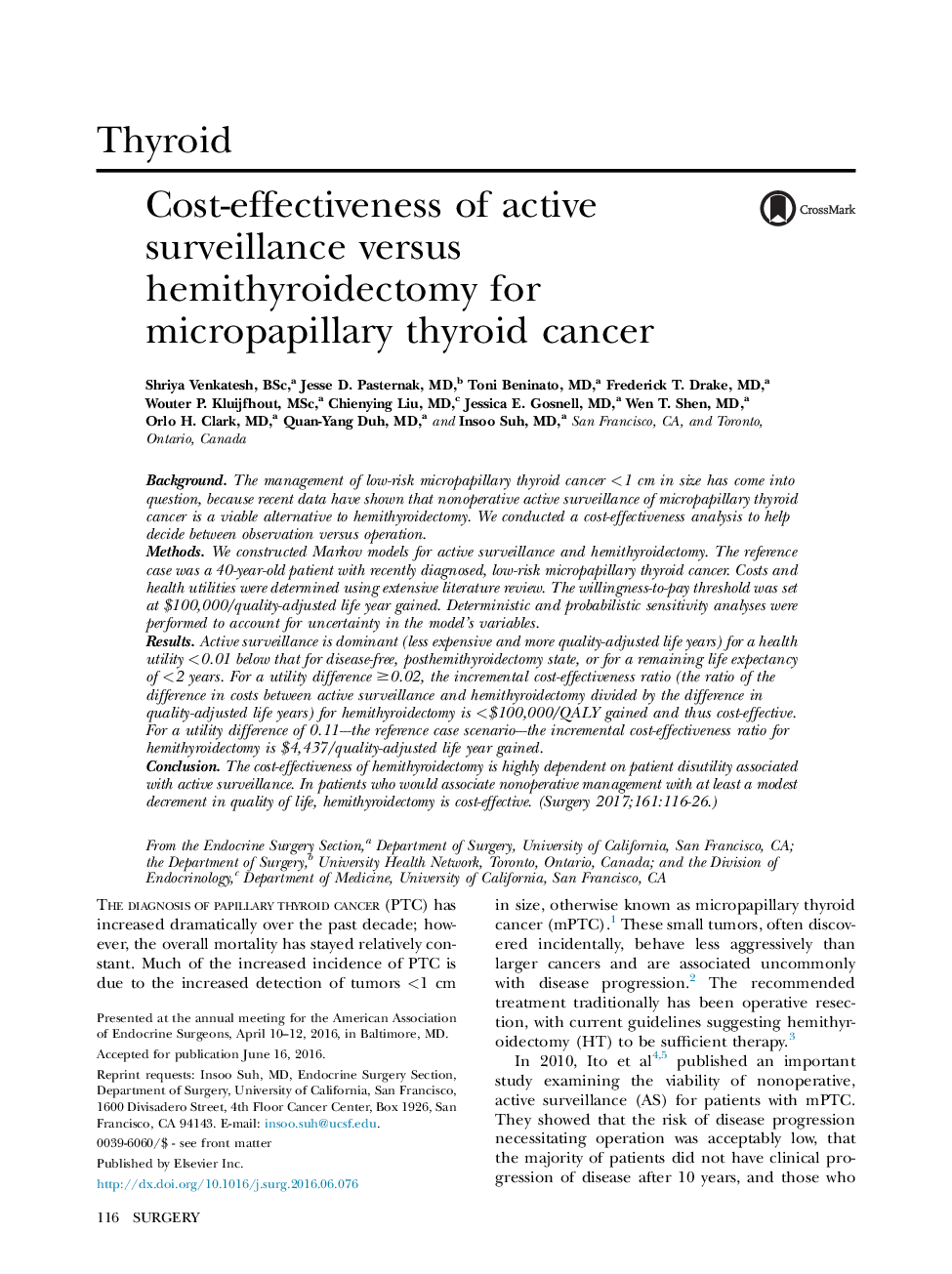| Article ID | Journal | Published Year | Pages | File Type |
|---|---|---|---|---|
| 5734509 | Surgery | 2017 | 11 Pages |
BackgroundThe management of low-risk micropapillary thyroid cancer <1 cm in size has come into question, because recent data have shown that nonoperative active surveillance of micropapillary thyroid cancer is a viable alternative to hemithyroidectomy. We conducted a cost-effectiveness analysis to help decide between observation versus operation.MethodsWe constructed Markov models for active surveillance and hemithyroidectomy. The reference case was a 40-year-old patient with recently diagnosed, low-risk micropapillary thyroid cancer. Costs and health utilities were determined using extensive literature review. The willingness-to-pay threshold was set at $100,000/quality-adjusted life year gained. Deterministic and probabilistic sensitivity analyses were performed to account for uncertainty in the model's variables.ResultsActive surveillance is dominant (less expensive and more quality-adjusted life years) for a health utility <0.01 below that for disease-free, posthemithyroidectomy state, or for a remaining life expectancy of <2 years. For a utility difference â¥0.02, the incremental cost-effectiveness ratio (the ratio of the difference in costs between active surveillance and hemithyroidectomy divided by the difference in quality-adjusted life years) for hemithyroidectomy is <$100,000/QALY gained and thus cost-effective. For a utility difference of 0.11-the reference case scenario-the incremental cost-effectiveness ratio for hemithyroidectomy is $4,437/quality-adjusted life year gained.ConclusionThe cost-effectiveness of hemithyroidectomy is highly dependent on patient disutility associated with active surveillance. In patients who would associate nonoperative management with at least a modest decrement in quality of life, hemithyroidectomy is cost-effective.
